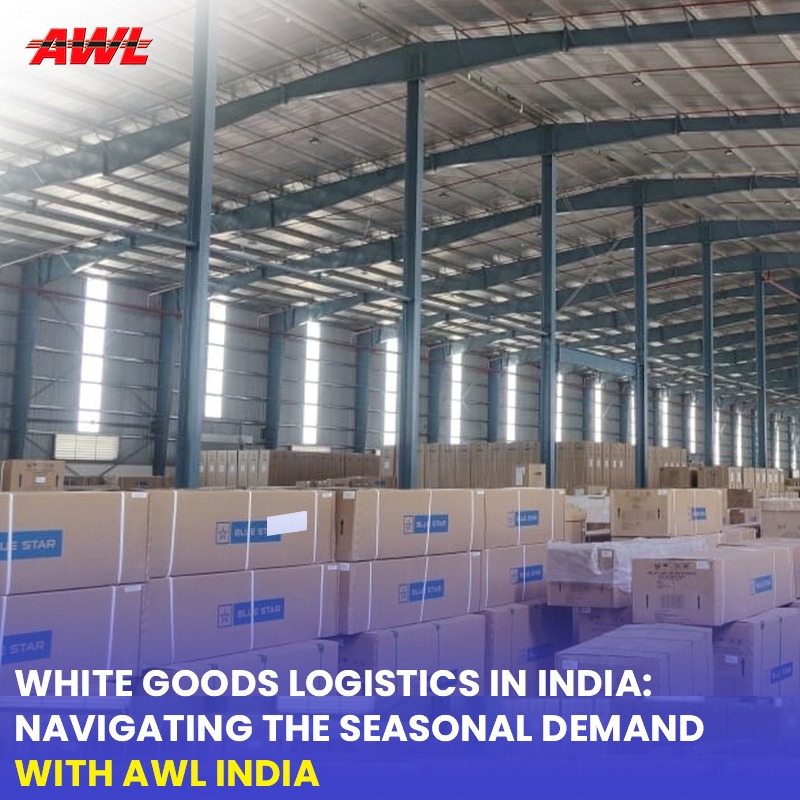

For warehouses to run smoothly, agility and efficiency are essential, and RFID technology is one of the newest developments available today. Recent years have seen a significant advancement in barcode technology, giving rise to RFID (Radio Frequency Identification) technology. The identifying codes are scanned by this system using radio waves, which makes them easier to read. In the sections that follow, we'll concentrate on analysing their potential, traits, and key benefits and drawbacks as they apply to warehouse and logistics operations. RFID tags that stand for Radio Frequency Identification tags are one of the most advanced technological automations in the warehouse.
Despite the costs involved in using RFID technology, the advantages it offers will make it worthwhile. Knowing why we need a project and what our objectives are is crucial when executing new projects in warehouse installations. From beginning to end, sound planning is also essential. Moreover, AWL India has made it easy to implement RFID tags in the warehouse.
For warehouses, RFID technology offers a wide range of benefits. If the processes are automated for greater profitability, which results in labour and time savings, their operations improve. The following are a few key advantages of implementing RFID technology in a warehouse:
Each product has a chip inside it that collects data, allowing for customised and individual treatment of the items. As a result, the supply chain's information on each unit in motion is always under control and centralised, which makes decision-making easier.
Compared to barcodes and other more conventional approaches, this technology dramatically increases the efficiency of all procedures. Additionally, because product inventory is automated and quick, workers save time. One of the key advantages of RFID would be this.
The inflow and outflow operations, expiration, mistakes, etc. will all be automated if this technology is used to register all the items in the warehouse. This expedites the whole procedure while decreasing mistakes, from product selection through client delivery.
Because of their integrated GPS, the items will always be in control and can be quickly and easily identified and located without the requirement for a visual connection between the reader and the tag. In this document, we discuss the industrial racking traceability systems in terms of traceability.
Each product contains specific information that makes it distinct from others and ensures its validity. One of the main benefits of RFID technology is this.
Greater inventory management is provided, helping us prevent a stockout since it will alert us to when there is an item shortage, when an item is in the incorrect place, and when an item is faulty. The usage of RFID technology enhances and expedites the warehouse's stock management procedure.
The general guidelines listed below show the path to take for an organised use of RFID technology in a warehouse:
This stage will be crucial since it's important to understand the warehouse's physical features, the processes that are being impacted, and the reasons and areas where we need to make improvements.
Stock management, which ensures that there is never a scarcity of supplies or that outdated products are removed from the warehouse, product traceability enhancements, general warehouse efficiency enhancements, etc. are a few operations that might require improvement. We must first determine our goals after deciding where and how to develop our warehouse. To determine the finest alternatives for warehouses, professionals in RFID technology are available.
Here, we must choose the right kind of solution to employ, the right kind of RFID tagging, the right kind of readers, if RFID printers are required, the right kind of antenna, RFID portals and gateways, etc. Budgets must also be taken into account and modified to reflect the company's financial situation.
It will be time to establish the installation once everything has been carefully planned and organised. Installations are often quick and easy. It is crucial to have strong network connections because all of this technology depends on them in order to read and transmit tag data. Once everything is operational, all that remains is to ensure that everything functions flawlessly and to properly educate the operators so they are familiar with the new installations.
Technology may not appear to be the driving force behind warehouse operations, but it actually has a major impact by lowering mistakes, increasing productivity, and keeping operations more organised and efficient. Modern warehouses and distribution centres use radio frequency identification (RFID) sensor systems, one of the most effective forms of technology. At AWL India, we continuously strive to deliver outstanding service while assisting businesses in expanding their worldwide consumer base. We work to complete the task, regardless of the difficulties presented, propelled by developing technology and advanced infrastructures. We have established an unrivalled reputation for providing top-notch supply chain management and logistics solutions. Moreover, AWL India being one of the best logistics and warehouse solutions providers in the country can enable your business to use RFID tags in the warehouse and maximise the profit margins.

